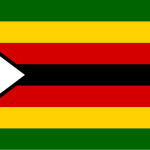
Labor Day
Also known as International Workers’ Day around the world, Labor Day is a holiday that is celebrated by more than 160 countries on or around the 1st of May. This day is a celebration of workers’ rights and is observed in different countries on different dates.
In the United States, however, Labor Day is celebrated on the first Monday of September. Although the international celebration predates the American one by decades, both holidays share a common purpose: to celebrate workers and advocate for improved wages and working conditions.
The History of International Labor Day (International Workers’ Day)
On April 21st, 1856, Australian stonemasons working in Victoria decided that they had had enough of their poor working conditions and decided to do something about it. They took part in a mass work stoppage as a result of the 8-Hour Workday Movement.
This movement was basically a social movement that worked to regulate the length of the working day so that workers couldn’t be overworked. Although this movement originally goes back to 16th-century Spain, it wasn’t until the mid-18th century that workers on a mass scale began to put it into action.
The 8-Hour Workday Movement would eventually inspire American workers to start their own movement later on. Not long after the Australian stonemasons’ work stoppage, International Workers’ Day was created.
This holiday would be observed every year to commemorate workers and as a tool to help them fight for better wages and work reforms. On May 1st, 1886, there was a general strike for the 8-hour workday in Chicago.
On the 4th of May, police officers worked to disperse the crowd that had assembled in support of the strike when someone decided to throw a bomb. The result was the police firing on the workers, leading to the deaths of seven police officers and four civilians.
Over one hundred fifteen civilians were also injured, as were sixty police officers. An organization of socialists and labor parties known as the Second International was held in Paris in 1889.
This was in response to a proposal that called for international demonstrations on the 1890 anniversary of the Chicago protests. On the 1st of May in 1890, the demonstrations took place not only in the United States but in most European countries as well. There were also concurrent demonstrations in Peru and Chile as well.
The Sixth Congress of the Second International took place in Amsterdam in 1904. This assembly called on all social democratic party organizations and trade unions to demonstrate for the legal establishment of an 8-hour workday in all countries around the world.
It also made it mandatory for all worker organizations to enact work stoppages on the 1st of May — if it was possible to do so without injury to the workers. As May 1st became the de facto holiday in many countries, the U.S. and Canada began a September holiday known as Labor Day.
It was first proposed in the 1880s, and in 1887, the U.S. State of Oregon became the first state to make Labor Day an official public holiday. By 1894, 30 U.S. states had officially established Labor Day before it became an official federal holiday.
Observing International Labor Day (International Workers’ Day)
In most countries around the world, International Labor Day is observed on the 1st of May, so it’s easier to list the countries that have divergent holiday dates — including the U.S. and Canada, which don’t observe the holiday at all but instead have their own Labor Day celebrations.
In Japan, the holiday isn’t officially observed, but since it falls during Golden Week, many workers tend to take the day off work. Not to join labor union gatherings or participate in street rallies, but more as an excuse to add a little bit of extra time to their holiday week.
In some countries, International Labor Day is not just observed on the 1st of May but also on the 2nd of May. This is the case in Bosnia and Herzegovina, Serbia, and Slovenia. The 2nd of May was also a holiday in Ukraine, but that changed in 2018 after Western Christianity’s Christmas became a new public holiday in the country.
In the United Kingdom, May Day is observed on the first Monday in May. Although it’s not an official Labor Day, it has become associated with the holiday during the late 20th century. Many people will observe May Day celebrations on this day, but there are also Labor Day celebrations sprinkled in as well.
In Australia, the celebration of this holiday is somewhat complicated. Although there may be unofficial commemorations and celebrations on May 1st, most people observe Labour Day according to the state or territory where they live.
In the Northern Territory and Queensland, Labour Day is observed on the 1st Monday in May. In some territories, this holiday can be observed on the 1st or 2nd Monday in March, in May, or in October. In New Zealand, the holiday isn’t observed in May at all. Instead, this holiday is observed on the fourth Monday in October.
Regardless of what day International Labor Day is observed, there is one thing that’s for certain: it’s going to be observed with a lot of fanfare. It’s often observed with parades, labor gatherings, marching bands, and sometimes even fireworks. It all depends on the country where it’s celebrated and the local customs of that country.








